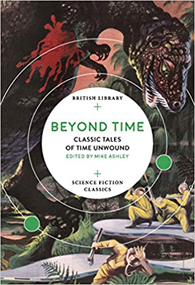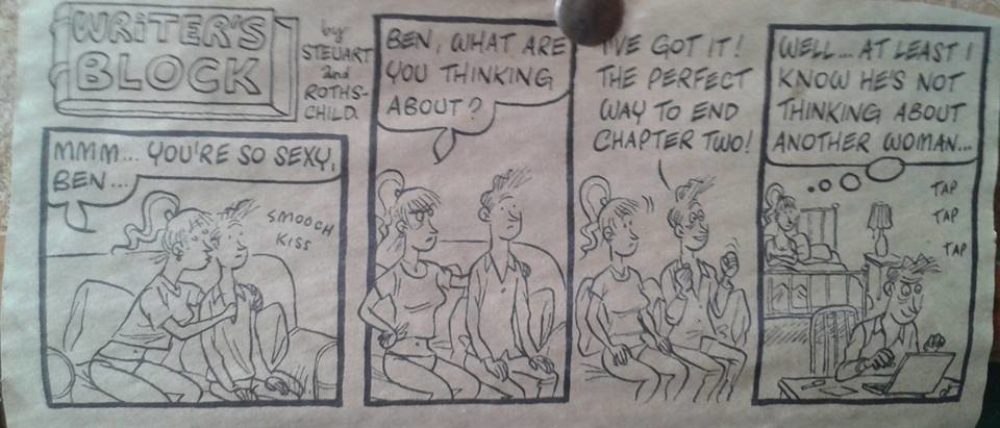 Beyond Time: Classic Tales of Time Unwound (2019)
Beyond Time: Classic Tales of Time Unwound (2019)
Mike Ashley (Ed.)
The British Library
Read a good old rollicking space opera, and as long as the author knows their stuff it’s fairly easy to take it at face value. You don’t immediately start asking questions about which laws of physics are being circumvented and how, or how they got from here to there, and so on. Read a time travel story, on the other hand, and the questions almost immediately start piling up. Readers start intuiting objections out of pure logic: is the past set in stone? What about the grandfather effect? Where are all the time travelling tourists? And so on. All those questions pretty well need to be dealt with by the end of the piece or the reader is cheated.
Mike Ashley has put together an interesting collection of thirteen obscure stories which were among the first to tackle these ideas with a proper, science fictional perspective rather than just shrug them off with ‘because’.
Ashley kicks off with an interesting review of the development of time travel notions, which even if you leave aside the outright (and one-way) fantasy of tales like Rip Van Winkle, go a lot further back than H.G. Wells. Wells of course once wrote a story about a device constructed with the specific purpose of travelling in time. The first instance of using a mechanical device to do that, however, appears in ‘The Clock That Went Backward’ by Edward Page Mitchell (1881).
The stories range from 1881-1958, though the second oldest is from 1929. Readers well-versed in Golden Age sf might recognise more of the authors’ names; other than Wells, the only really familiar genre name to me is E.C. Tubb, whose ‘Thirty Seven Times’ (1957) makes a good stab at reconciling free will and the predestination inherent in time travel. (Less associated with the genre, most readers have probably heard of J.B. Priestley.) Wells’s own contribution is ‘The Queer Story of Brownlow’s Newspaper’ (1932), in which a contemporary reader gets hold of a newspaper from the 1970s. It’s easy to forget Wells died more recently than the Second World War; it feels odd to see him mention Einstein.
Several authors seem to have taken their cue from Wells’s most famous work and have someone viewing the end of the Earth, all very much with the same elegiac tone as Wells himself used. There are also a lot of narrators relating what they’ve heard from another character who is in fact the protagonist.
In fact, there is a lot of talking in many stories, especially in the older ones, as the authors first of all have to lay down the theory of time travel that they then go on to explore. Priestley’s ‘Look After the Strange Girl’ (1953) is a welcome exception, offering no explanation as it opens in media res with a rather confused time traveller having to work out exactly what is happening. Priestley obviously assumed his audience would be able to do likewise and the story repays its author’s trust.
The best ‘explanation of time travel’ story (and one of the best, and funniest, overall) is Peter Phillip’s ‘Manna’ (1949), an eclectic mix of themes. It opens with a new artificial food being unleashed on the 21st century, solving the problem of world hunger in a flash; then introduces the ghosts of a pair of 12th century monks, one of whom is scientifically minded and has already used the science section of the local library to work out the scientific basis of exactly what he is and how the universe works; and who then uses his knowledge to divert the output of the food factory back to his monastery in the 12th century to feed the hungry thousands displaced by the war between Stephen and Matilda.
‘The Branches of Time’ by David R. Daniels (1935) takes the punchline that Ray Bradbury would use in ‘A Sound of Thunder’ (1952) … and discards it as a throwaway line in a whole series of possible consequences of time travel.
‘The Reign of the Reptiles’ by Alan Connell (1935) is the first story to allow a contemporary hero to have an actual science fictional adventure in the past, rather than a purely historical adventure, or a travelogue through the millennia. It also gives us the idea of sentient saurian civilisations, which is much older than Doctor Who. This one includes the hint that homo sapiens was created in the breeding labs of a saurian scientist, which I can imagine sending a delicious thrill through the ape-descended readership of the 1930s. It’s also a necessary corrective to some of the alternative and far more harmful theories of race which flourished in that era.
It takes a major effort not to refer to the concept of ‘Friday the Nineteenth’ by Elizabeth Sanxay Holding (1950) as ‘Groundhog Day’ – but, having said that, you will immediately understand. Here the day is lived by a couple who are planning an affair but never able to consummate it.
In ‘Tenth Time Around’ by J.T. McIntosh (1959) we get the first emergence of parallel universes as a result of time travel. The past is not necessarily written in stone: you’re in a parallel universe so the only person who benefits from any differences is you, no one else. This also gives us a precursor of chaos theory, with major differences spiralling off from small changes.
There is nothing here that will slap you in the face and make you go ‘wow’, but if you enjoy the time travel genre and the concepts inherent in it, this is an excellent primer and a source of many nuggets of trivia.
